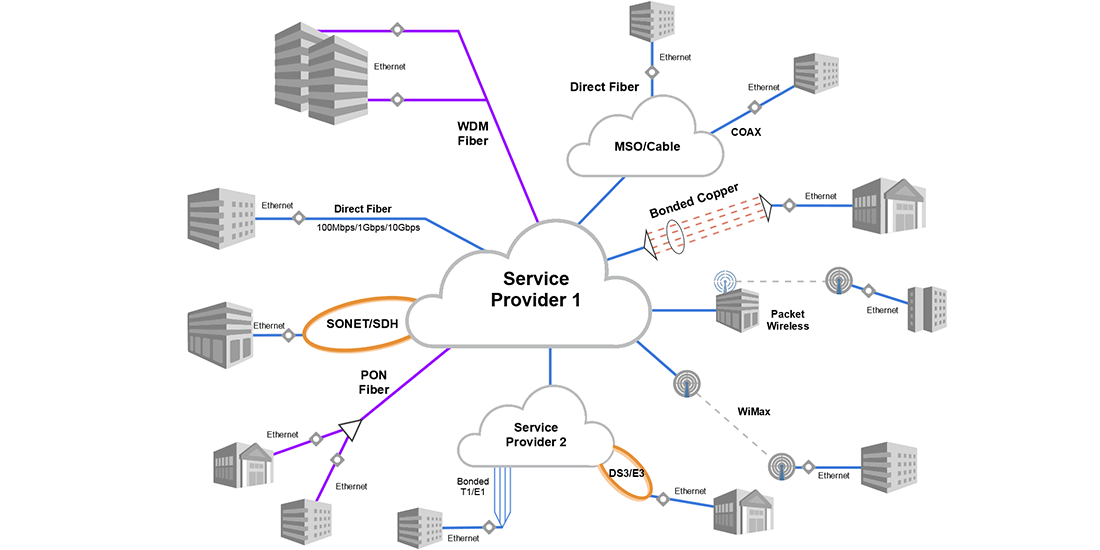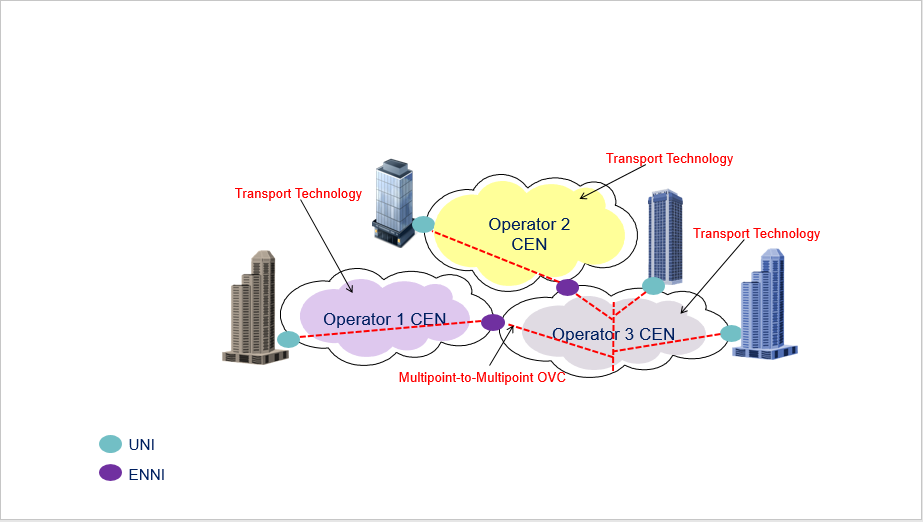
Carrier Ethernet Transport Technologies
From my previous blog “Ethernet – from LAN to WAN”, we understand that Ethernet is now an option when it comes to choosing a WAN technology. We refer it “Carrier Ethernet” and it offers five attributes over traditional Ethernet which was limited to LAN connectivity only. These five attributes are; Quality of Service, Reliability, Scalability, Standardized Services & Service Management. Having these five attributes on top of an easy and simple to use technology like Ethernet makes it an excellent choice to use for WAN connectivity.
Today we are going to discuss three common backend technology options which are used to enable Ethernet for WAN connectivity. These backend technologies are often referred to as “Transport Technologies” for Carrier Ethernet. Transport technologies are used within a Carrier Ethernet Network (CEN) or Operator CEN (Carrier Ethernet network maintained by individual Operators) to implement Ethernet services. These transport technologies are not addressed by MEF (Metro Ethernet Forum) which is the governing body of Carrier Ethernet standardization via any of its technical specifications. MEF standards focus on service requirements at UNI (User Network Interface) and ENNI (External Network to Network Interface) only & the requirements for Ethernet frame delivery between UNIs &/or ENNIs. MEF standards don’t address how a Service-Provider or Operator achieve service requirements and therefore transport technologies are considered internal matter of Operators &/or Service-Providers.
So as mentioned in the earlier part of my blog, Carrier Ethernet services can be implemented by following 3 transport technology categories:
- IEEE based transport technologies [Layer 2 Technologies]
- Provider Bridging (PB)
- Provider Backbone Bridging (PBB)
- Provider Backbone Bridging with Traffic Engineering (PBB-TE)
- MPLS based transport technologies [Layer 2.5 Technologies]
- MPLS VPWS
- MPLS VPLS
- MPLS TP
- Transparent transport technologies (optical by nature) [Layer 1 Technologies]
- SONET/SDH
- DWDM / CWDM
- OTN (G.709)
First category transport technologies are also known as Ethernet centric technologies whereas second category transport technologies are commonly referred as MPLS centric technologies. Please note that both (Ethernet-centric and MPLS-centric) fall into common pool of “packet aware” technologies. In first category, I have not added 802.1Q and 802.1D Ethernet technologies due to their inability to meet Scalability requirements of Carrier Ethernet (one of the five attributes of Carrier Ethernet). Third category is based on Optical-centric technologies which fall under “packet-unaware” technologies.
Above transport technologies differ in their ability to support Carrier Ethernet services. We can compare these three transport technologies in terms of scalability, bandwidth, Class of Service support, protection mechanisms, multipoint connectivity and VLAN awareness. In my next blog, I will address these terms in detail which are basically used as decision making factors when it comes to choosing best transport option for an Operator or Service-Provider’s Carrier Ethernet network.

